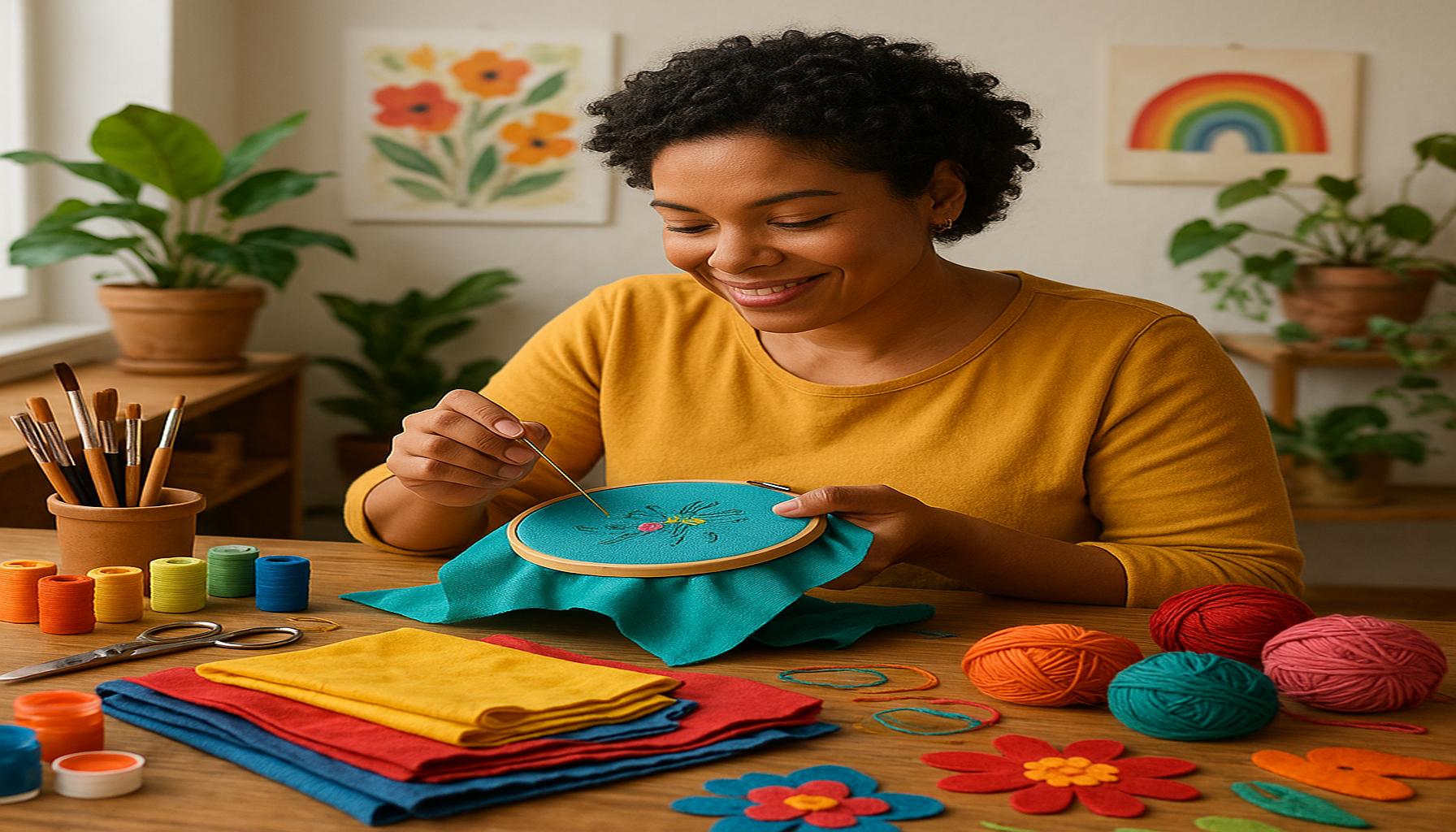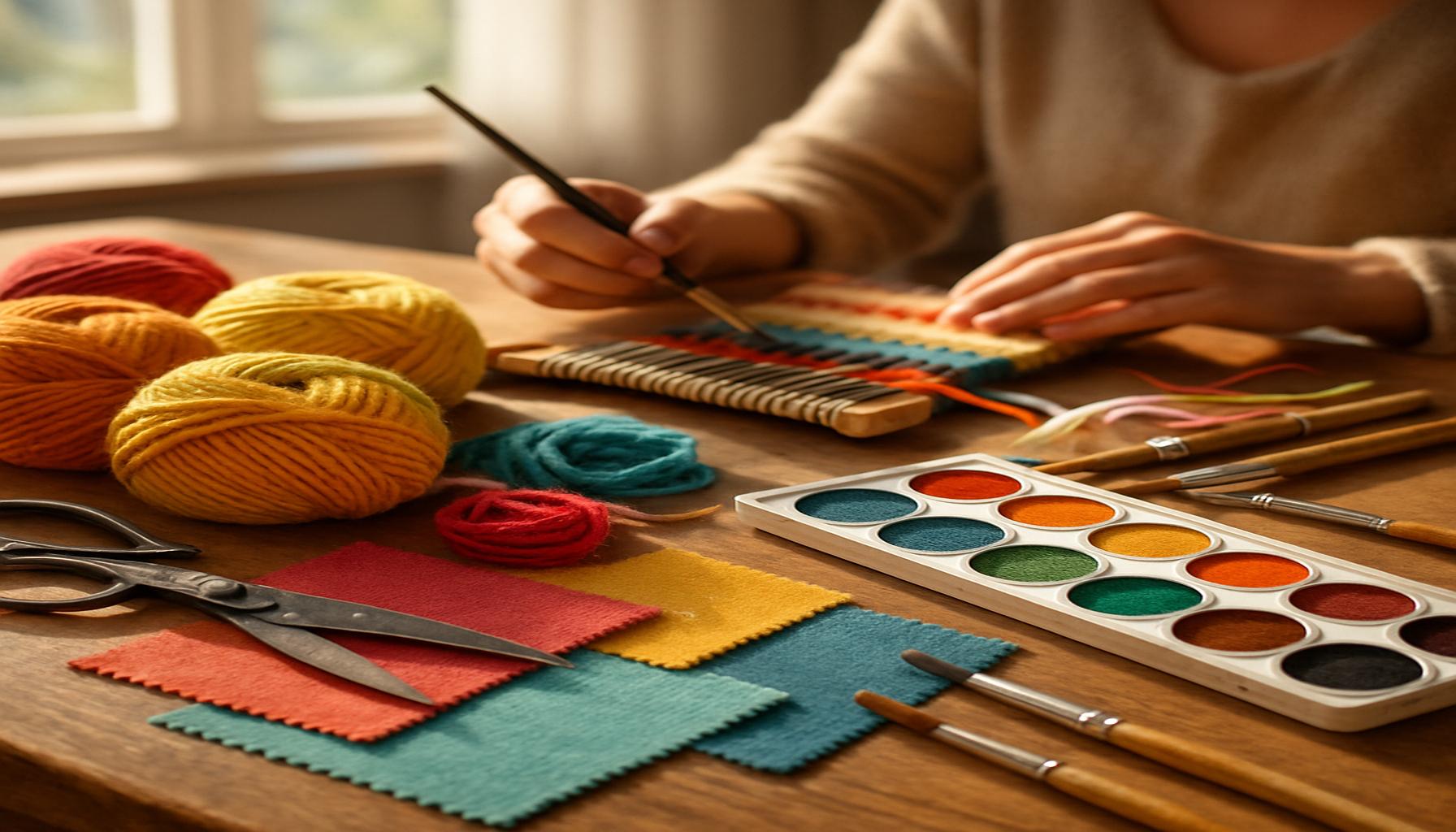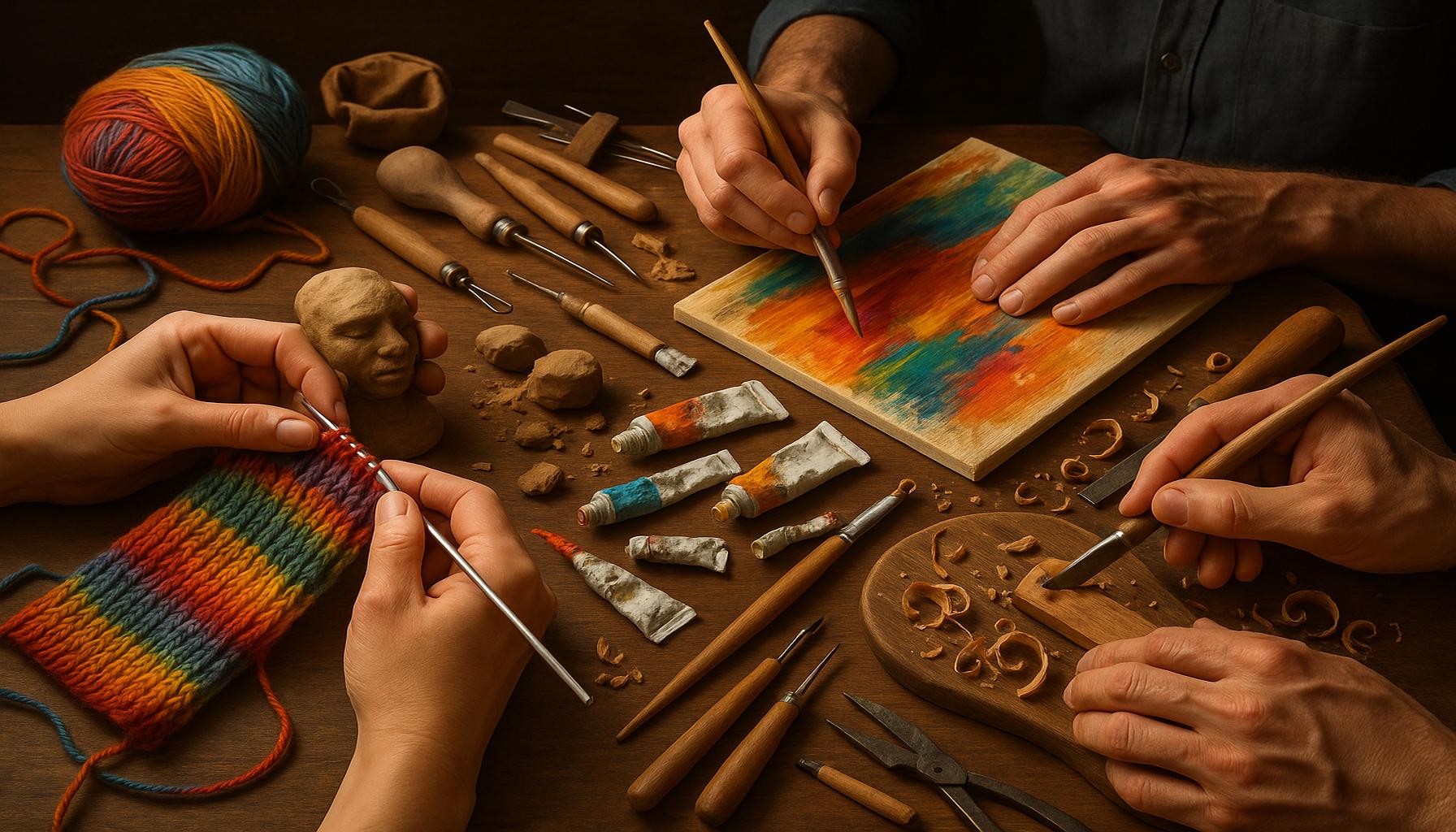Intergenerational Crafting: How to Pass Traditions and Skills Between Generations
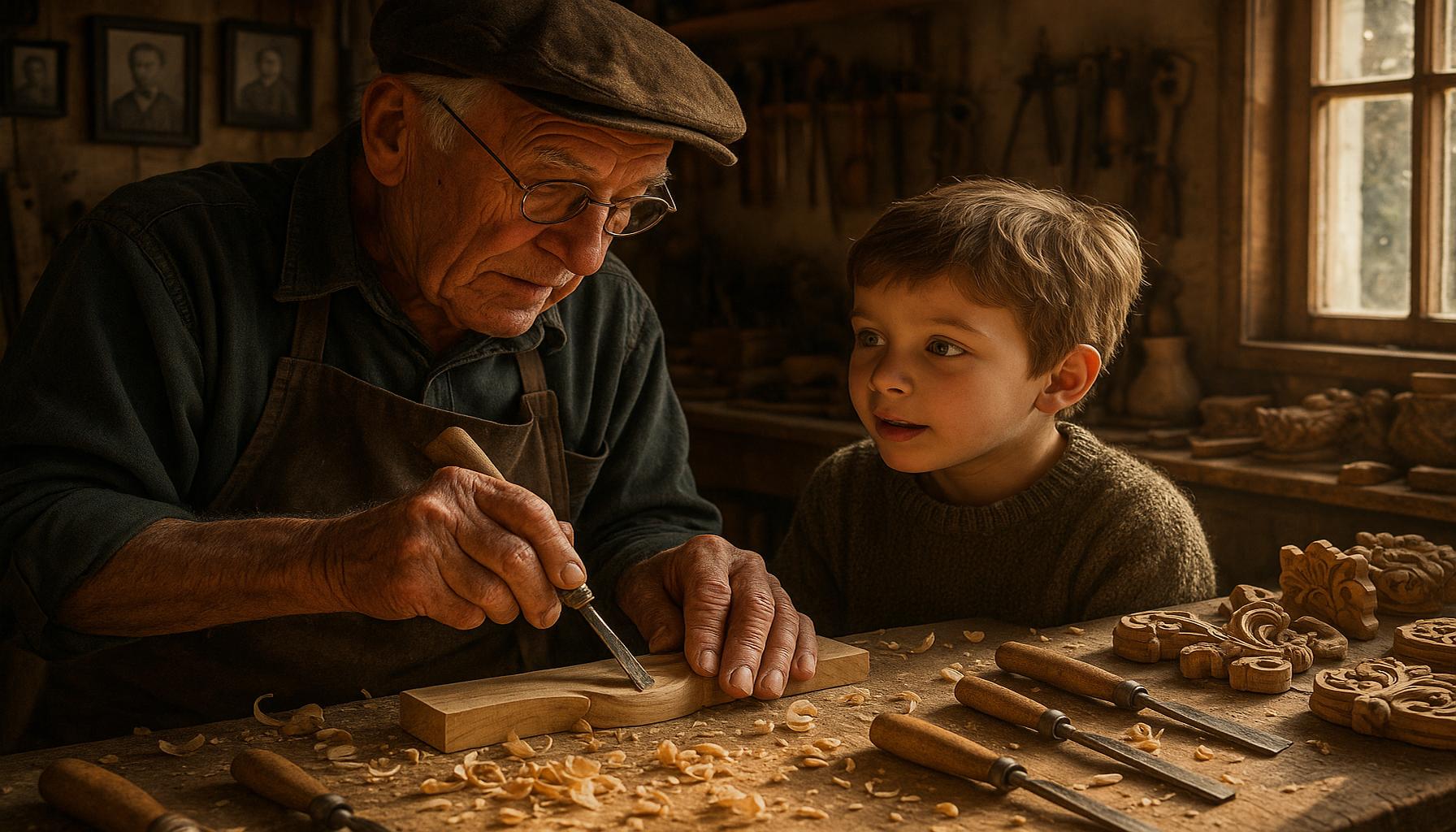
The Transformative Power of Crafting Across Generations
Crafting offers a profound means of connecting with our roots, transforming what might merely be hobby time into a treasure trove of familial and cultural heritage. The art of creating not only develops skills but also facilitates storytelling, exchanging life lessons, and solidifying relationships. As grandmothers, parents, and children gather around a table—or perhaps in a backyard workshop—they are not merely creating items but weaving the fabric of their family narrative.
Consider the tender scene of a child, beams of sunlight pouring through the window, as they learn the delicate art of knitting from their grandmother. Each stitch conveys a legacy of warmth and creativity, while also embedding vital lessons about patience and perseverance. Similarly, a teenager side by side with their father in a garage workshop could be learning about the intricacies of woodworking. The process of measuring, sawing, and aligning wood fosters critical problem-solving skills, not to mention the unique sense of accomplishment derived from a crafted product. Through these shared experiences, family bonds deepen, creating delightful memories that are cherished for years to come.
- Knitting and crocheting: With roots that trace back centuries, these techniques encourage creativity. Patterns often contain stories, linking generations through tangible pieces of art.
- Woodworking: A composite of art and engineering, woodworking involves practical application of math and design principles, rendering it a multifaceted learning tool.
- Culinary traditions: Recipes crafted over generations are not merely instructions but cultural artifacts. Sharing and recreating these meals often lead to lively discussions and reminiscing about family gatherings.
Each craft serves as a vessel for memories that transcend mere physical creation, highlighting the significance of storytelling and knowledge transfer. The importance of nurturing these moments is central to fostering:
- Cultural preservation: It is through the practice of these crafts that we maintain the richness of our unique cultural identities, from quilting circles in Appalachia to pottery workshops in New Mexico.
- Emotional bonding: Engaging in crafts cultivates a sense of belonging, fostering conversations that create emotional intimacy among generations.
- Skill development: Encouraging creativity and resilience across all ages, crafting often serves as a therapeutic outlet, as well as a skill-building activity.
The journey into intergenerational crafting reveals countless ways to capture and share our heritage. Whether through traditional crafts, DIY projects, or family-led workshops, this form of creativity is an invitation to explore and celebrate our pasts. Each item produced is a connection linking not just the present generations but a legacy that will be handed down to future ones. As we embrace crafting in its many forms, we become custodians of our family histories, ensuring that these connections endure long into the future.
DISCOVER MORE: Click here to learn about the psychological benefits of artistic hobbies
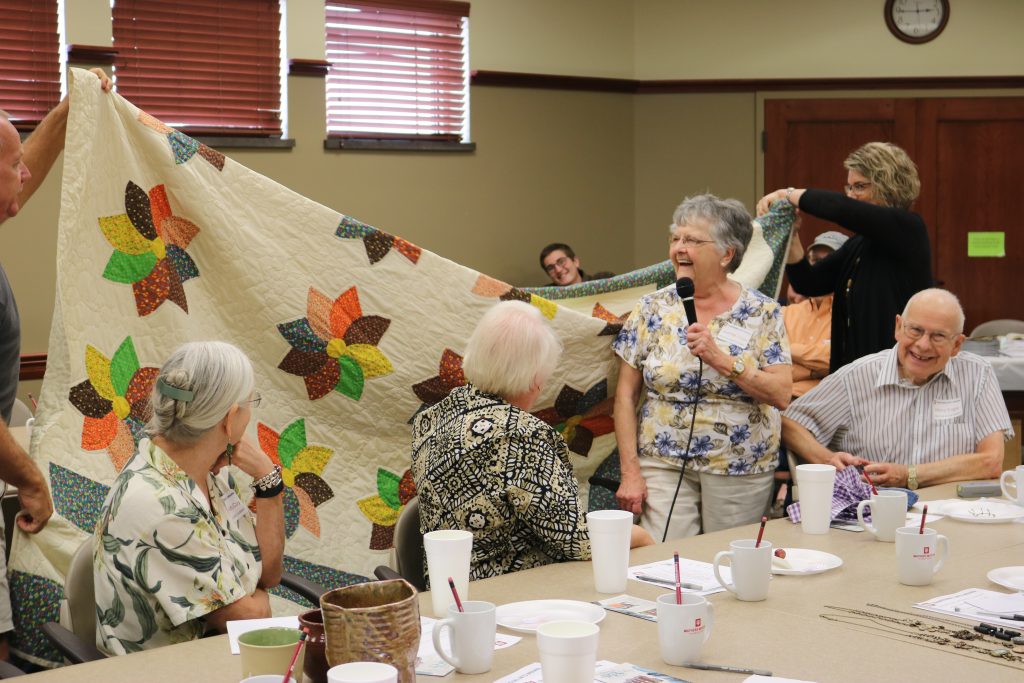
Discovering the Joys of Intergenerational Crafting
As society becomes increasingly fast-paced and technology-driven, the need to reconnect with our roots has never been more important. Intergenerational crafting serves as a bridge across ages, allowing families to share not just skills but also values, stories, and traditions. Engaging in crafting activities offers participants a multifaceted experience that nurtures both personal and familial growth.
When individuals of varying ages gather to work on a crafty project, they create a space where knowledge flows freely. Take, for instance, the art of quilling, a technique that transforms strips of paper into intricate designs. A grandparent can teach a child to manipulate the thin strips into beautiful shapes, while also sharing tales of how this very craft brought comfort during difficult times. This transmission of knowledge goes beyond mere instruction—it fosters a sense of belonging to a lineage that values creativity and innovation.
The Benefits of Crafting Together
Crafting together can noticeably enhance the emotional climate of the family unit. Studies have shown that collaborative projects reduce anxiety and foster a sense of accomplishment. Here are some key benefits:
- Strengthened family bonds: Working on a project together can create unique opportunities for meaningful conversations, helping to solidify relationships.
- Enhanced communication skills: The cooperative nature of crafting encourages individuals to express their thoughts and feelings, thereby improving interpersonal communication among family members.
- Preservation of family stories: Each crafting session is an opportunity to iterate family folklore; whether it’s a recipe passed down through generations or a hand-me-down sewing pattern, these stories lend depth to the family history.
Moreover, the act of crafting can serve as a means of emotional expression. For many, art takes on a therapeutic quality, helping reduce stress and anxiety. This is especially true for youth navigating the complexities of adolescence. Data shows that children who engage in creative outlets, such as crafting, tend to have better emotional resilience. They learn not only to cope with challenges but to express their emotions in constructive ways—skills that can be passed down through crafting traditions.
Beyond Crafts: Growing Together as a Family
While crafting traditions are intrinsic to many cultures, the practice can take on unique forms influenced by modern lifestyles. Families may choose to engage in DIY home projects, pottery classes, or even community art events, broadening the scope of what intergenerational crafting can entail. Notably, such activities can be incredibly inclusive, offering opportunities for disabled family members or individuals of all skill levels. The ultimate goal remains the same: whether through scrapbooking, sewing, or pottery, each act of creation nurtures the family’s cultural fabric, ensuring that the wisdom and experience of one generation positively impacts the next.
In exploring these avenues of intergenerational crafting, we realize that each craft forms a vital thread in the rich tapestry of family history. It is through these endeavors that we not only pass on skills but also the very essence of who we are—a lineage connected through creativity and shared stories. The next time you pick up a craft tool or gather around with loved ones, remember that you are cultivating traditions that can flourish for generations to come.
Understanding the Importance of Intergenerational Crafting
Intergenerational crafting not only preserves valuable skills but also strengthens the bonds between different generations. When grandparents, parents, and children come together to create, it becomes an enriching activity that fosters communication and understanding. This collaborative process allows the sharing of unique stories and experiences, enhancing the learning experience as techniques are passed down. The vibrancy each generation brings to crafts creates a dynamic atmosphere, making learning feel natural and enjoyable.Moreover, engaging in crafting activities has been shown to contribute positively to mental health and cognitive function across all age groups. Participating in hands-on activities promotes creativity, reduces stress, and increases attention spans. For younger generations, the skill-building aspect is crucial, as it lays a solid foundation for future endeavors, including problem-solving and critical thinking. By passing on traditional crafting skills, we are not just connecting the past with the present; we are equipping future generations with tools for success.Incorporating modern technologies, such as digital tutorials and online classes, can expand the reach of traditional crafting. This fusion of old and new enables families to engage in crafting regardless of their geographical barriers, making it easier to share experiences and skills virtually. The possibilities for creativity and connection are endless, as family members can participate in crafting no matter where they are.In summary, intergenerational crafting serves as a bridge between ages, allowing for the preservation of culture while providing valuable life skills. This seamless integration of tradition with contemporary approaches ensures that crafting remains relevant and accessible, laying the foundation for a rich learning experience that celebrates both heritage and innovation.
DISCOVER MORE: Click here to learn about eco-friendly crafting
Crafting as a Vehicle for Cultural Heritage
As we delve deeper into intergenerational crafting, it becomes evident that these activities serve not only as a channel for skill transmission but also as a vital mechanism for cultural preservation. Each culture has its unique crafts, often rooted in traditions that date back centuries. By engaging in such practices, families can actively participate in preserving this heritage while breathing new life into age-old techniques. For instance, Indigenous crafts like beadwork or weaving offer profound lessons in storytelling, symbolism, and community spirit, teaching younger generations about their identity and history.
Crafts can also reflect the diversity of the American experience. The practice of quilt-making, for example, has become synonymous with storytelling in many families. Each stitch has a story to tell, often representing significant milestones or collective memories. When multiple generations come together to create a quilt, they weave not just fabric but family narratives that encapsulate the essence of their shared experiences. Contemporary trends further allow family members to innovate, incorporating personal stories and modern aesthetics, thus ensuring that these traditions remain relevant.
Fostering Creativity Across Generations
The ability to innovate is often nurtured through collaborative crafting experiences. When individuals from different generations work on a project, the exchange of ideas can produce surprisingly unique results. A child’s fresh perspective combined with a grandparent’s seasoned expertise can lead to unexpected creations. For example, combining traditional knitting techniques with modern patterns can yield beautiful, contemporary designs that reflect both the history and the present. This process not only enhances creativity but also strengthens the idea that innovation is a continuous process, made richer by diverse input.
Moreover, intergenerational crafting is a platform for learning new technology-enhanced skills. A younger family member may introduce digital tools for design, while an older member imparts traditional crafting techniques, creating a symbiotic relationship where both sides benefit. This melding of past and present showcases the adaptability of crafting as a practice, presenting new opportunities for engagement and exploration. For instance, using a 3D printer to create a custom design can inspire a child’s interest, while an elder can guide them in making modifications based on time-honored techniques. The fusion of eras speaks volumes about the importance of continuous learning and adaptability in our fast-evolving world.
Building Community Through Crafting
Intergenerational crafting extends beyond the confines of a family unit. Community workshops and classes on crafting methodologies can welcome families of all backgrounds, creating a sense of connection through shared interests. Programs designed for intergenerational engagement enable participants to strengthen community bonds while enhancing their crafting skills. For instance, many local libraries and community centers offer programs that invite elders to teach skills such as sewing, woodworking, or pottery to younger generations. This not only creates a collaborative space but also fosters mentorship and friendship among participants.
Statistics reveal that over 50% of participants in crafting workshops report significant interactions with individuals outside their normal social circles, often leading to lasting friendships and network building. These activities help combat isolation, promote inclusion, and speed up the transfer of skills and knowledge. The sense of community fostered through crafting can instill confidence in younger participants, who learn not only how to create but also how to collaborate and appreciate others’ perspectives.
Through the lens of intergenerational crafting, families and communities alike find themselves fortified, with traditions evolving into modern-day practices that honor the past while looking toward the future. Each craft completed is more than just a project; it’s a legacy that cultivates continuity and resilience within the family and the broader community. Whether it’s in the comfort of a home or an organized workshop, the act of creating connects us to our roots and helps shape who we can become together. The possibilities are endless, limited only by the creativity and willingness to pass it forward.
DISCOVER MORE: Click here to dive deeper into the world of musical composition
Embracing the Future Through Crafting
In conclusion, intergenerational crafting serves as a powerful bridge linking past and future, allowing traditions and skills to flow seamlessly between generations. The act of creating together fosters not only individual creativity but also cultivates a profound sense of kinship and shared identity. From quilting to woodworking, these crafts encapsulate stories, values, and cultural heritage, enriching family relationships while ensuring that cherished traditions remain alive in a rapidly changing world.
As we’ve explored, the collaborative nature of crafting encourages innovation and adaptation, blending traditional techniques with modern technologies. This duality opens doors for all generations to learn and grow together, enhancing their understanding of both their heritage and contemporary methods. With community-based initiatives proliferating, opportunities for intergenerational engagement are on the rise, permitting skills to be passed on in a supportive and inclusive environment.
However, the benefits of crafting extend far beyond skill acquisition; they also forge lasting relationships, combat social isolation, and emphasize the importance of mentorship. As families and communities work together, they create networks that foster resilience, connection, and creativity. This collaborative spirit not only enriches individual lives but also strengthens the fabric of society as a whole.
Thus, it is essential for families to embrace intergenerational crafting as a valuable resource, igniting a passion for creativity that can be cherished across time. By engaging in these meaningful activities, we not only honor our past but also build a more connected and inclusive future where every stitch, every carve, and every creation tells a story of continuity, love, and shared experience.
